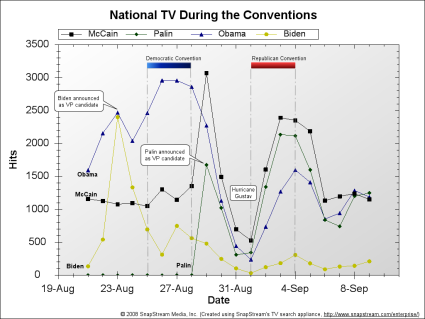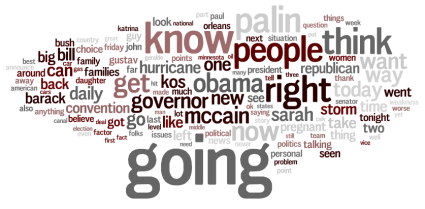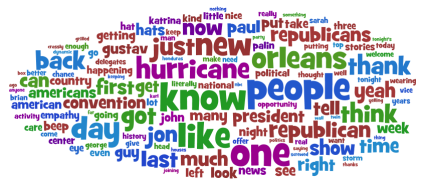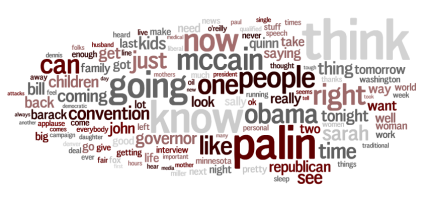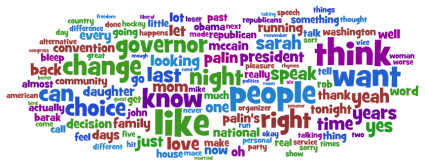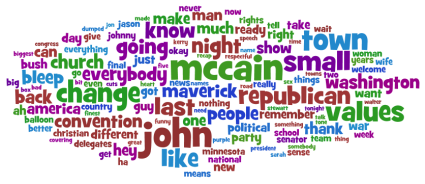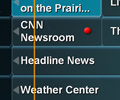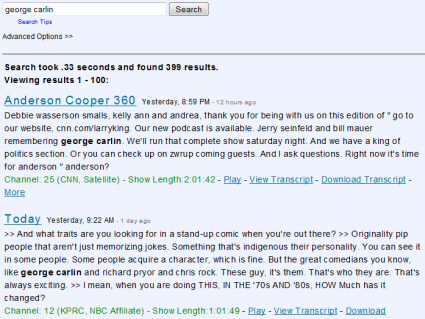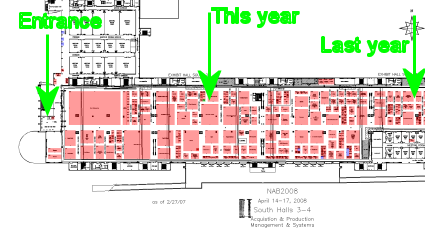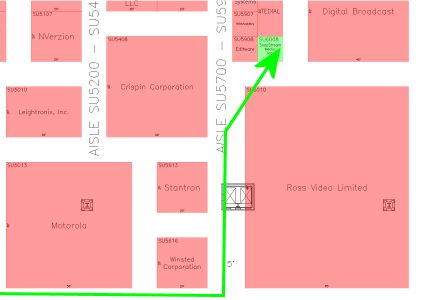This coming week, some of us from SnapStream are headed to San Antonio, TX to attend and exhibit at one of the largest annual 'technology in education' events here in the U.S. -- the National Educational Computing Conference (NECC).
SnapStream will be on the exhibit floor in booth #3034 (here's a map), if you're looking for us.
But since this will be our first time at NECC and, really, our first time at any kind of large gathering of K-12 and university educators, I figure it's a good time to explain what we know about the value proposition of SnapStream to K-12 schools and universities.
When I was in grade school, there wasn't a lot of technology in the classroom. My Houston public elementary school had a shared area of "pods", each with headphones and cassette players where we'd do "SRA" and every so often, our teacher would haul in an 8mm projector on a cart and we'd all take a nap while the lights were out... but I digress. :-) And the private high school that I attended had a few computer labs, but that's about it. That was technology for me in grade school. Today, I'm amazed at the technology that I see used in the classroom -- and, as I've learned, television is one of the many educational tools found in today's classroom. For some background on how television gets used in education, check out Cable in the Classroom. So delivering television into the classroom is the first thing that SnapStream Enterprise does for K-12 schools and universities:
1. Distribution of television to the classroom (over the LAN)
With SnapStream Enterprise, schools can distribute television over their LANs to all their classrooms. And in most cases, they can do this using their existing TCP/IP infrastructure and their existing PCs and display projectors in the classroom. For new schools, using the LAN to distribute TV can eliminate the need to install expensive extra RF cable infrastructure. And through the easy-to-use SnapStream PC client software, teachers can not only watch live TV, they can also watch recorded TV, schedule new recordings and search TV recordings (more on this below). With the ability to schedule recordings and play them back anytime, teachers aren't tied to the broadcast schedule and can integrate TV shows into their curricula whenever they'd like.
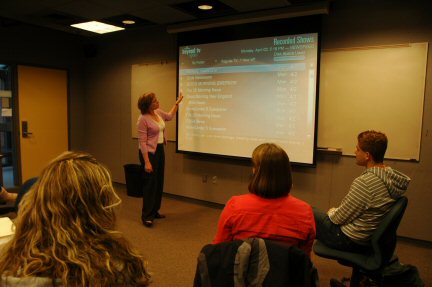
Here's a journalism professor at Emerson College using the SnapStream Enterprise client software to bring TV into the classroom. This is a university but it's the same idea at the K-12 level...
2. SnapStream's TV search allows educators to harness TV in new ways
SnapStream's TV search technology allows teachers to easily search inside TV recordings.
With our search technology and our built-in clipping functions, teachers can ferret out relevant and useful snippets of TV content for use in their classes. Any clip can be downloaded and easily integrated into a teacher's Powerpoint or other presentation.
For example, if a teacher wanted to talk about the California wildfires in his social studies class, he could:
1) do a search on "California wildfires",
2) get these TV search results:
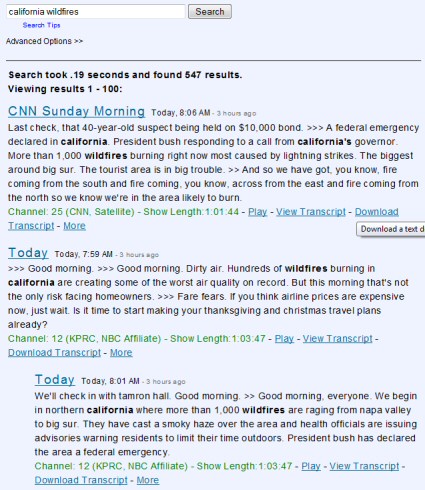
3) watch each segment,
4) clip the segments he wants to use in his class and, finally,
5) download the clips for inclusion in his presentation.
And this would all be possible for the teacher to do from his classroom PC, without anyone else's help -- no need for anyone from A/V or the library to get involved. This is one example of how we think our TV search technology can make TV accessible and useful to educators in new ways.
3. Student projects and assignment
Because SnapStream Enterprise makes television accessible from any LAN accessible PC, it can be installed on library PCs, computer labs or other public-area computers. And then teachers can give homework and other assignments built around SnapStream Enterprise. For example, a teacher could give students an assignment to watch a presidential debate using SnapStream Enterprise or they could ask their students to do a comparison of how one TV network's coverage of a particular candidate differs from another TV networks coverage of the same candidate.
And SnapStream Enterprise has access control functions built-in so users can be given varying levels of permissions. For example, students can be given one set of permissions while administrators can have their own set of permissions.
4. Content analysis and research for journalism, media studies and political science
For people who do what's known as "content analysis" on broadcast television, this one doesn't require much explanation. Rather than having to manually watch potentially hundreds of TV news broadcasts and transcribe their contents (heretofore the exclusive job of poor, underpaid grad students!), SnapStream Enterprise automatically provides a full text transcript for any recorded TV program. A sample TV show transcript exported from a SnapStream Enterprise TV Server:
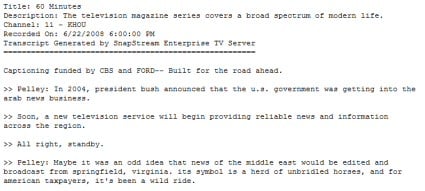
Those transcripts can then be exported from SnapStream Enterprise and pulled into 3rd party software for coding and textual analysis or SnapStream's TV search technology can be used to do things like word frequency. If don't know what content analysis is and you're still wondering, here's an example of the kind of findings that might come out of a content analysis.
So that's a quick run down of what I know about how SnapStream Enterprise useful to universities and K-12 schools. We already have a number of customers in the area of education (in particular, amongst journalism schools) but we're looking forward to talking to a lot more and learning more about the problems that exist amongst teachers and professors trying to leverage television in education. Are you an educator that uses television in your teaching curriculum? Is there something you'd like to see our product do? Leave a comment below!

